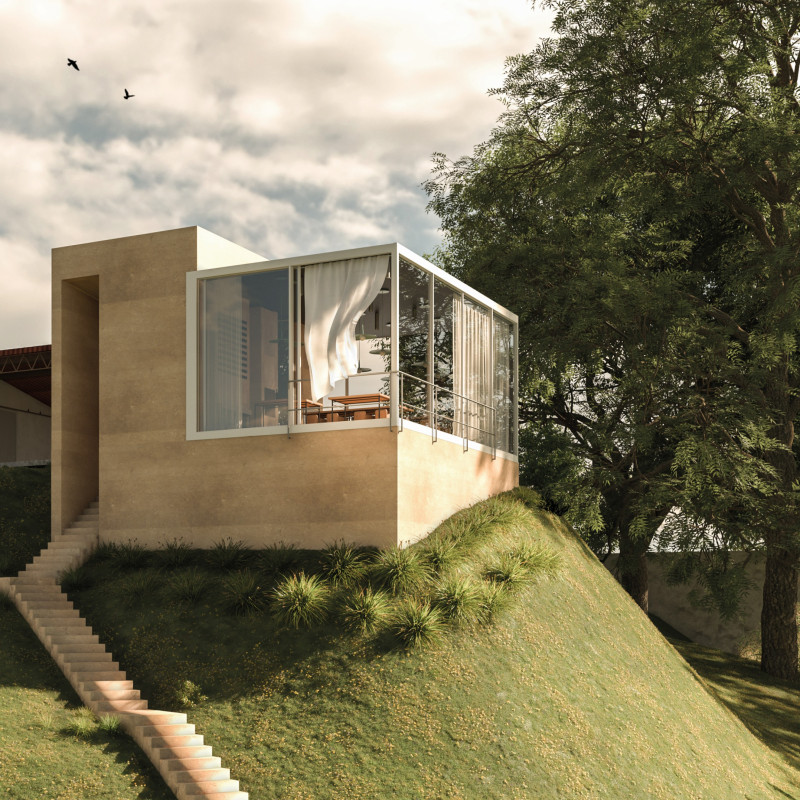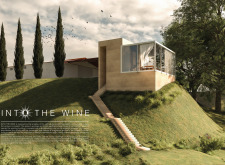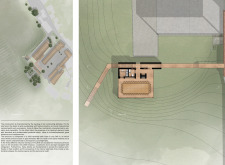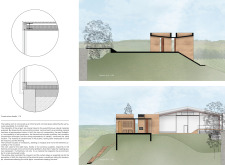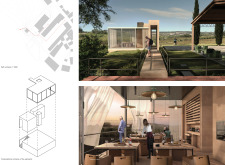5 key facts about this project
The structure utilizes a thoughtful arrangement of spaces, leading visitors from the entrance through various tasting areas that overlook the vineyard. The organization of the layout facilitates a smooth transition between indoor and outdoor spaces, allowing for both private events and larger communal experiences.
The architecture emphasizes the duality of traditional and modern elements, creating a coherent relationship between the materiality of the building and its environment.
Material Selection and Environmental Integration
This project employs a range of materials that underscore its sustainability ethos. Rammed earth dominates the façade, chosen for its thermal mass and local availability. This material not only reduces the energy footprint of the building but also connects it visually and texturally to the landscape. Reinforced concrete elements provide necessary structural integrity, while cork is utilized in furnishings for its acoustic properties and ecological advantages. Additionally, large glass panels are integrated throughout the design, enhancing visibility and natural lighting, while framing picturesque views of the vineyard. This combination of materials signals a modern architectural approach while remaining rooted in local tradition.
Innovative Interaction with the Landscape
A unique aspect of "Into the Wine" is its spatial interaction with the surrounding vineyards. The building’s layout intentionally maximizes views and connections to the agricultural environment, promoting an immersive experience for visitors. The external terraces serve not only as extensions of the tasting room but also as venues for outdoor events, fully engaging with the landscape. The modularity of furniture made from cork allows for flexible use of these spaces, accommodating various group sizes and activities.
The architectural design prioritizes sustainability and user experience, where the lightness of the glass juxtaposes the earthy solidity of the rammed earth, illustrating a thoughtful dialogue between different design philosophies. The simplicity of the lines and the integration of outdoor spaces contribute to a cohesive environment that invites exploration and enjoyment of the local viticulture.
For further technical insight into "Into the Wine," including detailed architectural plans, sections, and unique design elements, readers are encouraged to explore the project presentation for a deeper understanding of its architectural concepts and intentions.


